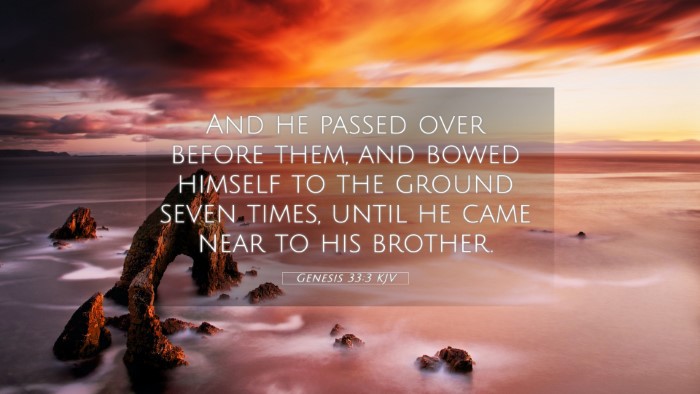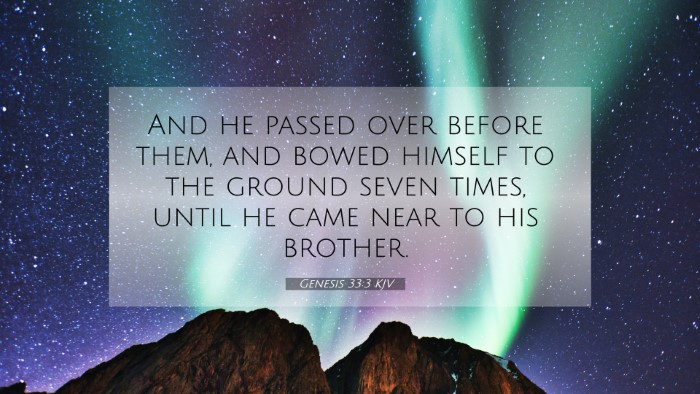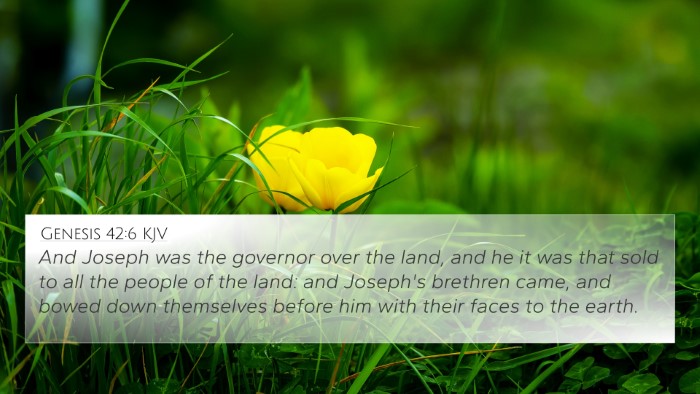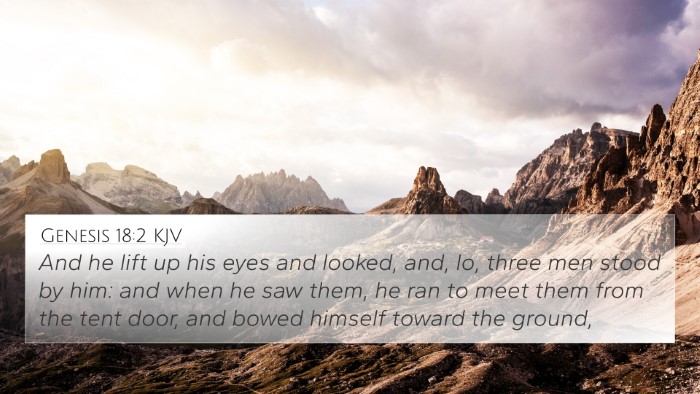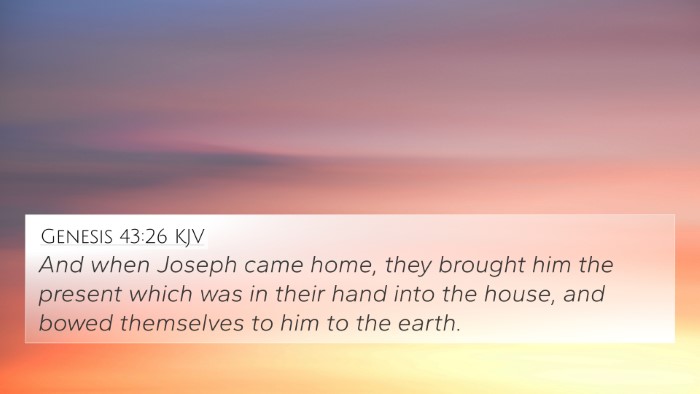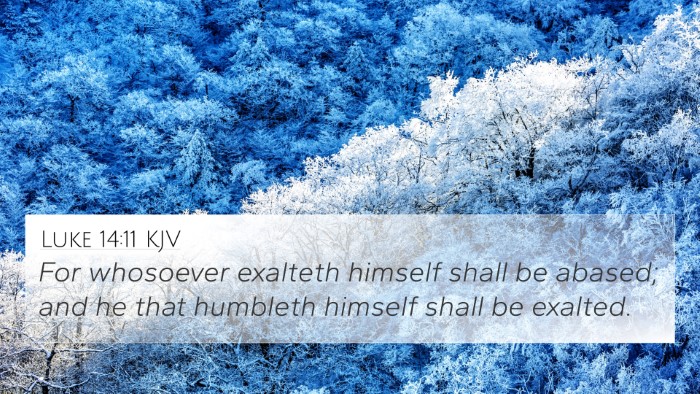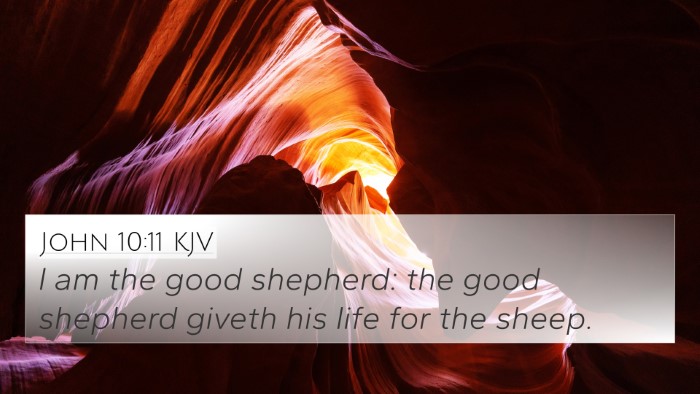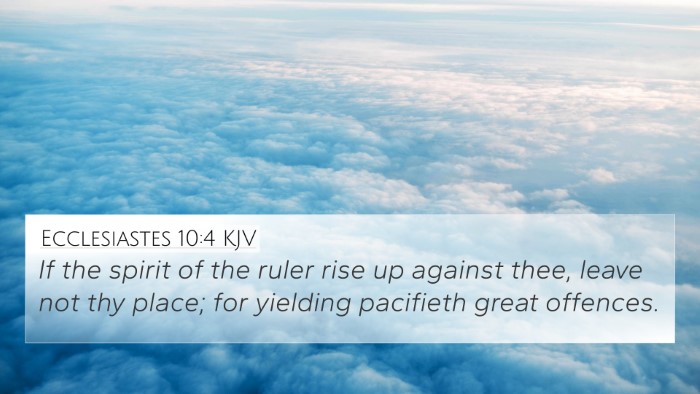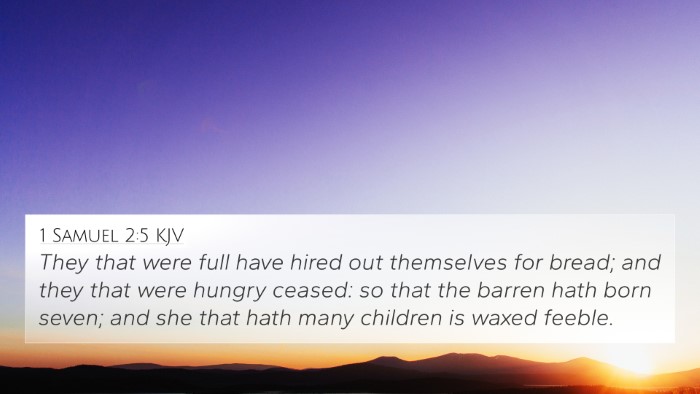Understanding Genesis 33:3
Genesis 33:3 states: "And he passed over before them, and bowed himself to the ground seven times, until he came near to his brother." This verse captures a pivotal moment in the reconciliation between Jacob and Esau, offering rich insights into themes of humility, reconciliation, and the profound importance of family relations in biblical narratives.
Summary of Genesis 33:3
This verse illustrates Jacob's approach to Esau, emphasizing his humility and respect. Bowing seven times signifies Jacob's acknowledgment of Esau's position and his desire to mend their estranged relationship. The act of bowing indicates not just humility but a recognition of past grievances and a heartfelt plea for forgiveness.
Commentary Insights
Insights from public domain commentaries enhance the understanding of this verse:
- Matthew Henry: Henry notes that Jacob's humility demonstrates his sincere intentions to reconcile. The seven bows symbolize a complete submission and deep respect to Esau, suggesting that he fully acknowledges the tension that once existed between them.
- Albert Barnes: Barnes points out that this act of bowing reflects Jacob's transformation and growth since fleeing from Esau. His submission is not merely a gesture, but it is rooted in the transformative encounters he had with God, which altered his character and priorities.
- Adam Clarke: Clarke emphasizes the cultural context of bowing in that era, which was a customary act of respect and deference, highlighting Jacob's desire to restore familial bonds, showing that despite past conflicts, reconciliation is possible.
Thematic Connections and Bible Cross-References
Genesis 33:3 connects with numerous other passages, enriching its themes and implications:
- Genesis 32:20: Jacob's earlier attempts to appease Esau reflect his anxiety about their reunion.
- Philippians 2:3-4: This New Testament passage calls for humility and valuing others, echoing the spirit of Jacob's actions.
- Psalms 133:1: Celebrates unity and harmony among brothers, resonating with the reconciliation theme present in Genesis 33.
- Matthew 5:23-24: Emphasizes the importance of reconciliation before worship, paralleling Jacob's actions as a step towards peace.
- Luke 15:20: The Prodigal Son's return reflects themes of humility and welcome, similar to Jacob's approach to Esau.
- 1 Peter 5:6: Encourages believers to humble themselves, drawing a connection to Jacob's humility before Esau.
- Hebrews 12:14: Speaks of pursuing peace, aligning with the objectives behind Jacob's gesture towards Esau.
Inter-Biblical Dialogue and Comparative Analysis
The dialogue within the scriptures provides a rich texture to understanding the dynamics of Jacob and Esau's relationship:
The act of bowing introduces a comparison with other familial reconciliations in Scripture:
- Joseph and his brothers (Genesis 45): Joseph demonstrated similar humility, instead of seeking revenge, he sought reconciliation.
- David and Saul (1 Samuel 24): David showed respect to Saul, illustrating humility in conflict resolution.
- Forgiveness in the New Testament (Colossians 3:13): Encourages believers to forgive one another, mirroring Jacob's plea for forgiveness from Esau.
Tools for Bible Cross-Referencing
For a deeper study, consider utilizing:
- Bible Concordance: A helpful tool for locating specific themes and connections across scripture.
- Bible Cross-Reference Guide: Guides to provide thematic connections, enhancing understanding of narratives.
- Cross-Reference Bible Study: Methods to explore connections between verses to see the broader narrative.
- Bible Reference Resources: Materials that offer extensive studies on interconnected verses and themes.
How to Identify Connections between Bible Verses
Learning how to cross-reference can enhance your understanding of key themes:
- Examine the context: Look at surrounding verses for contextual understanding.
- Identify themes: Seek common themes between different passages.
- Utilize study tools: Explore concordances and guides to find parallels.
Conclusion
In summary, Genesis 33:3 serves as a profound example of humility, reconciliation, and the importance of addressing past grievances. By exploring cross-references and biblical connections, we gain a richer understanding of these themes, showing how interconnected the scriptures are in teaching about relationships and forgiveness.
This comprehensive analysis of Genesis 33:3 demonstrates the vast network of themes present across the Bible and the importance of studying these connections to foster a deeper faith and understanding.

